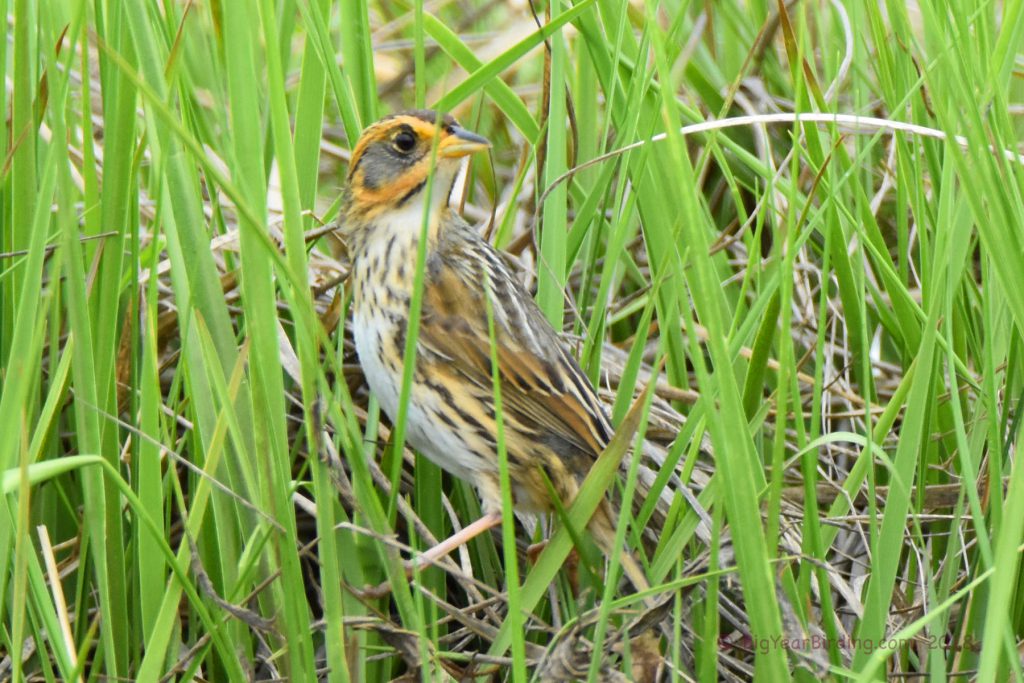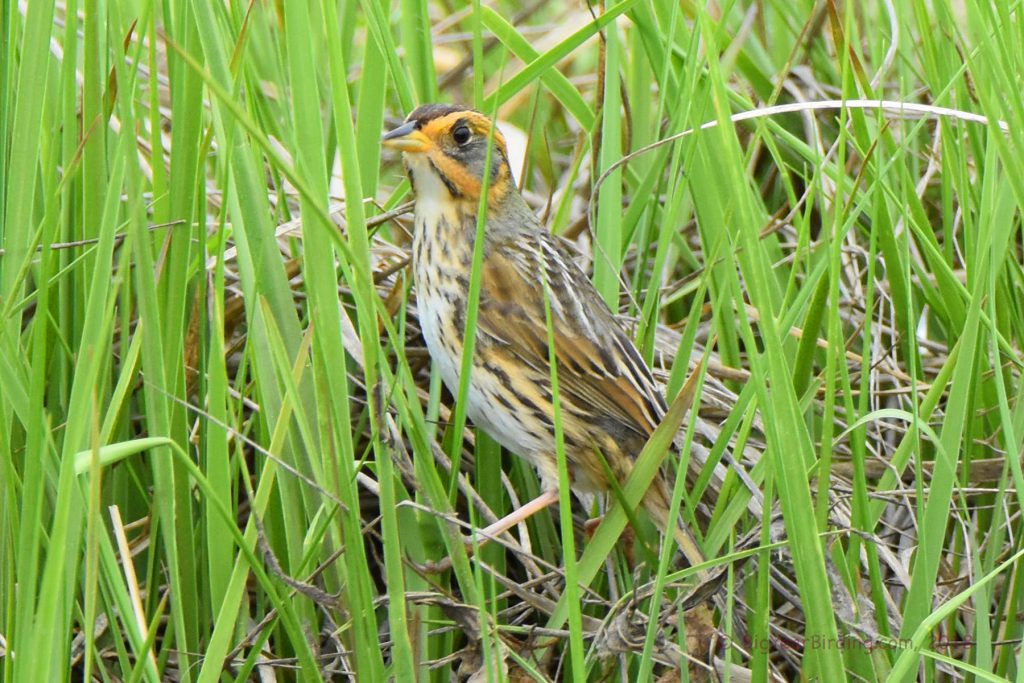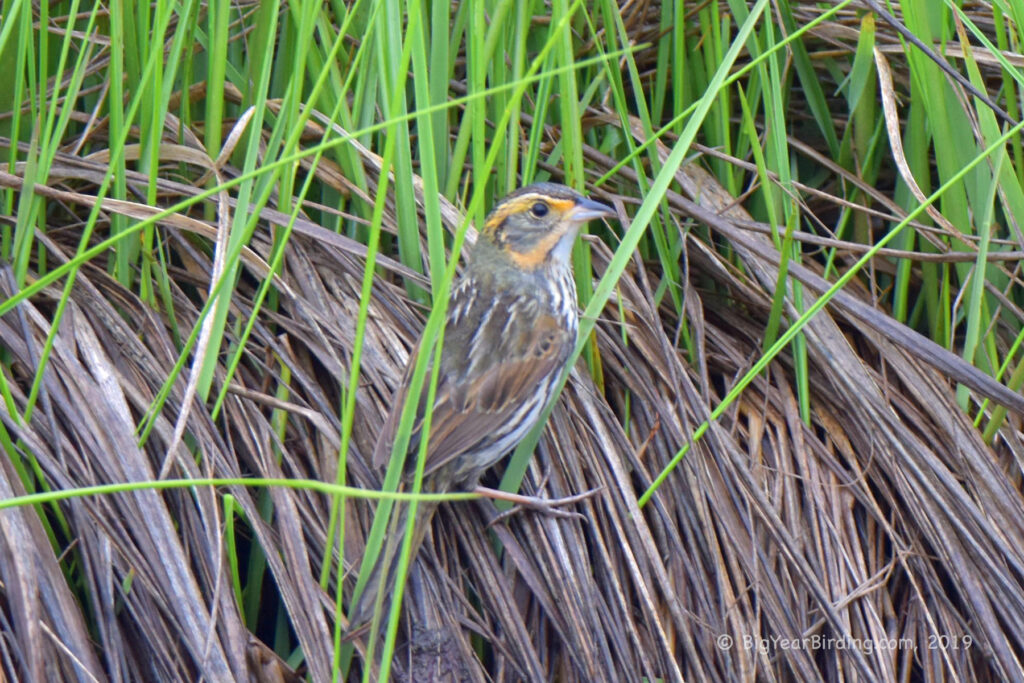
The Saltmarsh Sparrow (Ammospiza caudacuta) is a small, secretive bird that inhabits the salt marshes along the eastern coast of North America. This sparrow has a length of about 4.5 inches and a wingspan of approximately 6.7 inches. It weighs around 0.4 ounces, making it one of the smallest bird species in the region.

One of the most distinguishing field marks of the Saltmarsh Sparrow is its yellowish-brown head with a narrow white stripe above its eye and a grayish-brown nape. It also has a streaked back, wings, and tail, with its underparts being pale gray. Both males and females have similar plumage, with juveniles being slightly duller and browner.
The Saltmarsh Sparrow is a migratory bird that breeds along the coast from southern Maine to Virginia, with the majority of the population concentrated in the salt marshes of Connecticut. During the winter months, they migrate south to the coastal marshes of South Carolina, Georgia, and Florida.
The species is considered to be highly vulnerable due to habitat loss caused by sea-level rise and coastal development. In recent years, the population of Saltmarsh Sparrows has declined dramatically, with estimates suggesting that there are only around 53,000 individuals left in the world.

Conservation efforts are underway to protect the remaining population of Saltmarsh Sparrows, including the restoration of their salt marsh habitats, the creation of buffer zones around their breeding grounds, and the development of new breeding areas further inland. The Saltmarsh Sparrow’s unique ecology and habitat requirements make it an important indicator species for the health of coastal marshes, which provide essential ecological services such as erosion control, water purification, and carbon sequestration.

